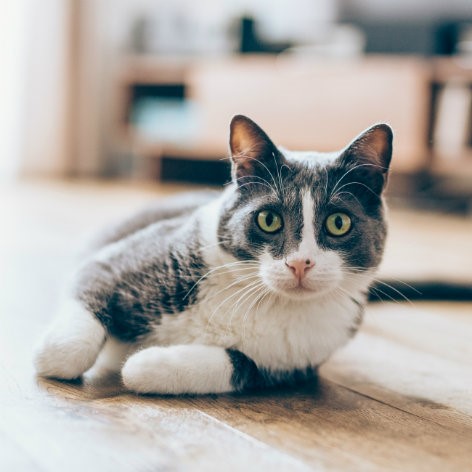Some days, it’s only natural to feel like your cat’s from another planet, but did you know they have a third eyelid?
This third eyelid plays an essential role in keeping their eye surface healthy while protecting it. However, if the third eyelid constantly protrudes, it could indicate that there is a problem
What Makes a Third Eyelid Eye-Catching
A cat’s third eyelid is known as a nictitating membrane, or fold of tissue at the inside corner of the eye, which makes it different to the first (upper) and second (lower) eyelid. The third eyelid is also covered in conjunctiva (the same tissue on the white of the eye)and keeps its shape using a special T-shaped cartilage.
What does a cat's third eyelid do?
It contains part of the tear gland of the eye and produces heaps of the tear ‘film’. So, if your cat gets a little dirt in their eye while they’re adventuring around the house, the third eyelid keeps the tear film strong, moving tears across the eyes, and pushing the debris out. This action also keeps your cat’s eye lubricated and healthy.
Movement of the third eyelid is also partly controlled by your cat’s sympathetic nervous system and the muscle cells within the third eyelid itself. This eye-catching feature helps protect the eye from injury, as they move through tall grass or capture pray.
How to Spot the Third Eyelid
When your cat is alert, most of the third eyelid remains hidden in the eye socket, with only a tiny portion visible at the inner corner of the eye. When they’re relaxed, say during naptime, the retraction of the eyeball by a set of muscles causes the third eyelid to move across the eye surface.
Did you know? Humans have a third eyelid too!
But because we pet-lovers have a lesser need for eye protection, our third eyelid is just a fleshy bump on the inner corner of our eyelids.
What the Third Eyelid is Trying to Tell You
When the third eyelids come up - or “prolapse” - causing them to be visible when your feline is already alert, it could be a sign of an underlying problem. Several conditions are associated with prolapsed third eyelids, some of which are unrelated to the eyes. You might want to get your kitty to the vet for a health check.
Some Possible Health Issues of the Third Eyelid
- Eye disease: If your cat has an infection or inflammation in one or both eyes, this could cause the third eyelid to prolapse.
- High body temperature: If they have a high fever, the third eyelid could cover their eyes.
- Dehydration: If your cat is old and thin or dehydrated and loses tissue around the eye, the third eyelid will prolapse.
- Nerve damage: Nerve damage in your cat’s face and neck will usually cause the third eyelid to prolapse in at least one of the eyes, although it is possible for the other eye to follow. Where nerve damage is concerned, there are often other signs to go with this, such as a change in pupil size or loss of muscle movement in your feline’s face.
- Intestinal upset: The most common cause of a third eyelid prolapse in both eyes (called Haws syndrome) is when your cat has a gastrointestinal upset such as intestinal worms or other parasites; food intolerance; a viral or bacterial gut infection.
Your vet will start with a clinical examination and a thorough eye check. Further tests may be required (including faecal and blood tests), and your cat might need a special diet or medication.
And just so you know, depending on the diagnosis, a prolapsed third eyelid can take up to 4 weeks to return to normal.





